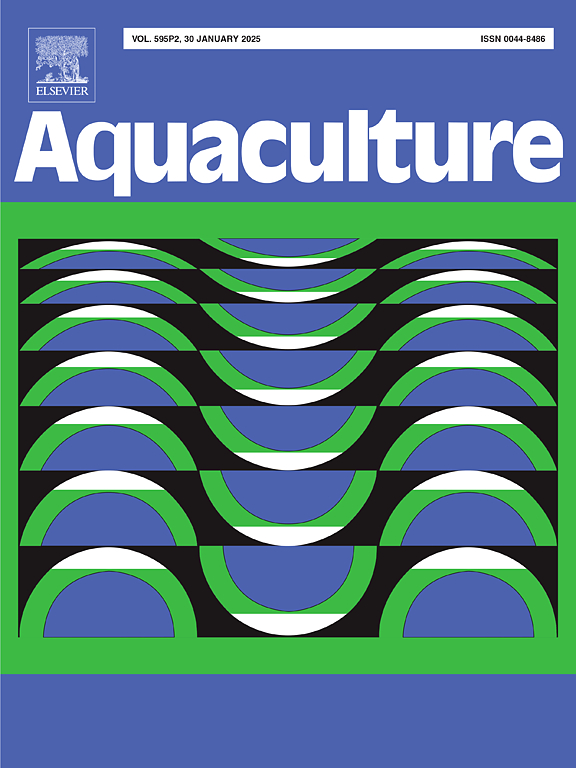Xanthosine-mediated modulation of Haematococcus pluvialis growth and stress response under high light: Insights from physiological and transcriptome analysis
IF 3.9
1区 农林科学
Q1 FISHERIES
引用次数: 0
Abstract
Haematococcus pluvialis always forms a thick and rigid secondary cell wall (SCW) during astaxanthin accumulation under high light conditions, which poses significant challenges for the efficient recovery of bioactive products. Cultivating motile cells that lack SCW offers a potential solution to this issue. In this study, it was demonstrated that enhanced purine metabolism can inhibit SCW formation in H. pluvialis. Exogenous supplementation with 1 mM xanthosine increased the proportion of motile cells from nearly 0 % to 93.2 % after nine days of high light exposure. Additionally, xanthosine treatment led to increased cell density, enhanced chlorophyll fluorescence parameters, elevated starch, and protein content, and reduced reactive oxygen species (ROS), carbohydrate, and lipid levels. Moreover, xanthosine increased the contents of unsaturated and total fatty acids on day 3 but decreased these levels on day 9. Comparative transcriptome analysis revealed that xanthosine significantly upregulated the expression of genes involved in purine metabolism, cell cycle regulation, carbon fixation in photosynthesis, photosynthesis-antenna proteins, glycolysis, TCA cycle, amino acid biosynthesis, unsaturated fatty acid biosynthesis, starch biosynthesis, and astaxanthin biosynthesis. Conversely, it significantly downregulated the expression of genes associated with mannan biosynthesis, algaenan biosynthesis, and the methylerythritol 4-phosphate (MEP) pathway. Additionally, xanthosine significantly altered the expression of genes involved in the antioxidant system and the MAPK signaling pathway. Collectively, this study establishes a link between purine metabolism and SCW synthesis in H. pluvialis, and provides insights into the mechanism by which xanthosine influences growth and SCW synthesis under high light conditions.
求助全文
约1分钟内获得全文
求助全文
来源期刊

Aquaculture
农林科学-海洋与淡水生物学
CiteScore
8.60
自引率
17.80%
发文量
1246
审稿时长
56 days
期刊介绍:
Aquaculture is an international journal for the exploration, improvement and management of all freshwater and marine food resources. It publishes novel and innovative research of world-wide interest on farming of aquatic organisms, which includes finfish, mollusks, crustaceans and aquatic plants for human consumption. Research on ornamentals is not a focus of the Journal. Aquaculture only publishes papers with a clear relevance to improving aquaculture practices or a potential application.
 求助内容:
求助内容: 应助结果提醒方式:
应助结果提醒方式:


